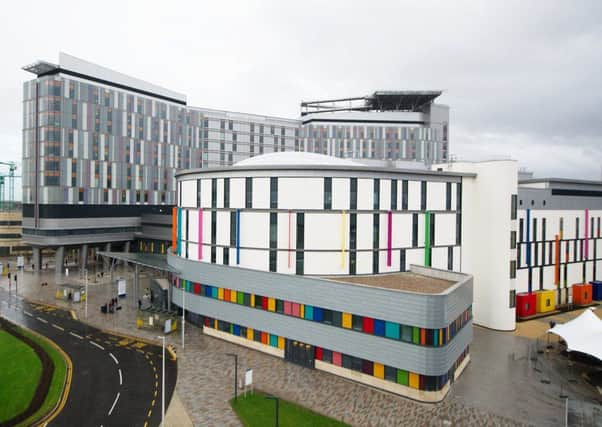How Glasgow University is driving forward innovation in human imaging


The imaging network boasts world-class research and infrastructure, tackling the complete range of challenges faced in modern imaging applications.
Thanks to the development of ICE, which offers enhanced medical imaging technology, and the hospital as a teaching site, Glasgow has become one of the key areas in innovation and development for imaging and research into chronic diseases in general.
Advertisement
Hide AdAdvertisement
Hide AdAs well as this, the Queen Elizabeth Hospital has industry space available for companies to come in and work with academics and the NHS to further explore and share knowledge on the current research, advances and ultimately help patients in the future.
What is imaging?
Medical imaging is the visualisation of body parts, tissues, or organs, for use in clinical diagnosis, treatment and disease monitoring. Imaging techniques encompass the fields of radiology, nuclear medicine and optical imaging and image-guided intervention.
Glasgow University's ICE Building is bringing together imaging specialists from a broad range of disciples to work together on the same site – something which will help problem solving, communication and analysis across the board.
Dr Carol Clugston, Chief Operating Officer within the College of Medical, Veterinary & Life Sciences at Glasgow University says: “In Glasgow we have a huge amount of chronic disease unfortunately. We work with NHS Glasgow and Greater Clyde which is the biggest health-board in the UK, and we are working in the biggest hospital in Europe – the Queen Elizabeth Hospital - with the most chronic disease in Europe so we have the ideal environment for us to capitalise on all these aspects, and to be able to work with all the data that is coming from all these sources.”
She continues:“One of the main areas of research where Glasgow University is really leading the way within the UK and possibly globally is imaging data. Here at the Queen Elizabeth Hospital site we have got one of the first seven tester MRI scanners, which is an ultra-high resolution scanner that can produce high quality, very detailed images that are of a resolution which is much greater than the current standard.
“What makes us so unique is that we have the only 7-Tesla MRI scanner in Scotland – there are some others in the UK – but none of the others in the UK are actually embedded within a clinical site, which means we have the ability to use that scanner to image people with diseases such as stroke, or diseases involving the brain such as tumours/oncology/MS/small vessel diseases in the brain. The resolution of the scan is so great that we can now use that as another tool for stratification in the same way that genomics has been used to stratify the population into different types of treatment strategy, we can now start to do the same with imaging in a way that can’t be done anywhere else in the UK and probably only one or two places in the world.”
Why is this important?
MRI has revolutionised diagnostic medicine, allowing unprecedented visualisation of anatomy, morphology, blood flow, metabolism and biochemistry in vivo. In addition, it is now finding application in both Geosciences and Engineering.
“The high magnetic field of the 7T scanner allows extremely high resolution scanning of the body, potentially letting us see structures down to 1 millimetre in size or even smaller says Professor Keith Muir, SINAPSE Chair of Clinical Imaging (Stroke and Brain Imaging).
Advertisement
Hide AdAdvertisement
Hide Ad“This technology opens up the possibilities for new clinical and basic neuroscience research, and has great potential for aiding our understanding of diseases such as stroke, vascular dementia, brain tumours, Parkinson’s, Alzheimer’s, epilepsy and multiple sclerosis.
“These devices are already being used for research into the brain. But so far we’ve only scratched the surface of what these pieces of equipment can do.”
The medical research being carried out on the 7T scanner could lead to new ways of diagnosing diseases, as the machine will not only speed-up scientific research but will also directly help patients and in turn, the NHS.
Glasgow University works with the companies that design and make the hardware and software for the 7T scanners to ensure that they can always be expanding the machines' range of services.